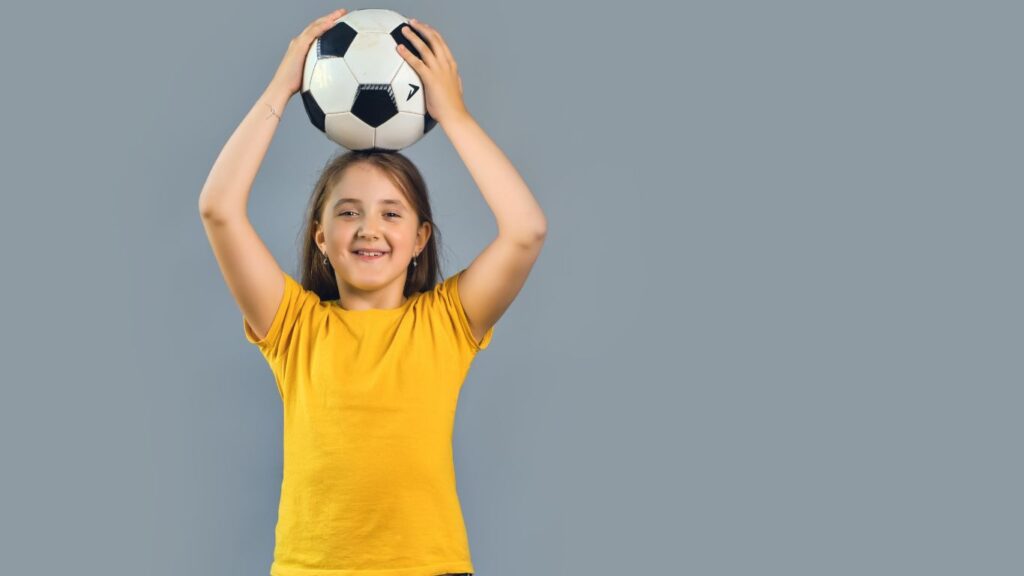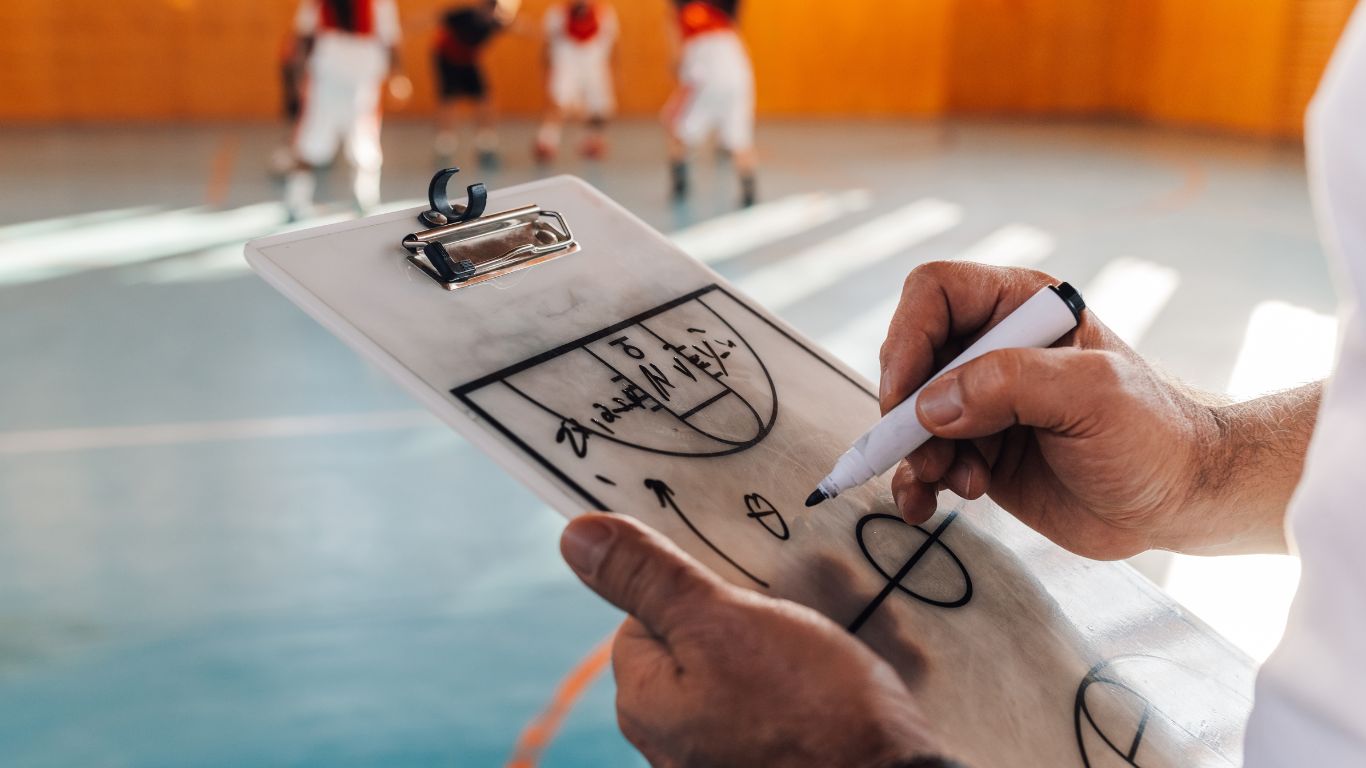Choosing the right size soccer ball for your 8-year-old can make a big difference in their enjoyment and performance on the field. With so many sizes and variations available, finding the perfect fit for your young athlete can be overwhelming. Understanding the importance of using the correct size soccer ball can help them develop their skills and confidence while playing the game they love.
Introduction: The importance of selecting the proper ball size
Choosing the right size soccer ball for your 8-year-old is crucial to ensure they have a positive experience playing the game. Just like with any sport, having the proper equipment can significantly impact a player’s performance and enjoyment on the field.
The size of the soccer ball matters because it directly impacts your child’s ability to control and manipulate it during games and practices. Using a ball that is too large or too small can hinder their development as a player and prevent them from thoroughly enjoying the sport.
For younger players, such as 8-year-olds, selecting a soccer ball that is the appropriate size for their age and skill level is essential. Using a ball that is too big can make it difficult for them to kick, dribble, and pass accurately, while a ball that is too small can be challenging to control and may not be suitable for their growing bodies.
By choosing the right size soccer ball for your 8-year-old, you are helping them develop their technical skills and preventing potential injuries from using the wrong equipment. A ball that is too large or heavy can strain their muscles and joints, leading to discomfort and possibly long-term damage.
In addition to physical considerations, using the proper-sized soccer ball can enhance your child’s confidence and motivation on the field. When they can control the ball effectively and execute skills quickly, they will feel more confident in their abilities and more likely to enjoy playing the game.
Selecting the right-sized soccer ball for your 8-year-old is not a one-size-fits-all decision. It requires consideration of their age, height, and skill level to determine which ball will best suit their needs. Taking the time to find the right ball can make a significant difference in their development and overall enjoyment of the game.
Understanding Ball Sizes: Different Options for 8-year-olds
When choosing the right soccer ball for an 8-year-old, there are a few essential factors to consider. One of the most crucial considerations is the size of the ball. Soccer balls come in different sizes, each designed for a specific age group or level of play.
The most common size of a soccer ball for an 8-year-old child is a size 4. This size is recommended for children between the ages of 8 and 12 and is typically used in youth soccer leagues and games. A size four soccer ball is smaller and lighter than a standard adult-sized ball, making it easier for young players to control and kick.
Another option for 8-year-olds is a size three soccer ball. This size is recommended for children under 8, but some 8-year-olds may still feel comfortable using a size three ball. Size 3 balls are even smaller and lighter than size four balls, which can benefit young players who are just learning the basics of the game.
While size four and size 3 are the most common options for 8-year-olds, smaller sizes are also available for younger children. These smaller sizes, such as size one and size 2, are designed for toddlers and young children just starting to play soccer. These tiny balls are perfect for developing coordination and motor skills in the youngest players.
When choosing a soccer ball for an 8-year-old, it’s essential to consider the child’s size and skill level. More minor children may feel more comfortable using a size three ball, while more prominent or experienced players may prefer a size four ball. It’s also a good idea to consider the child’s playing environment – if they are playing on a smaller field or in a tight space, a smaller ball may be more suitable.
In addition to size, you should also consider the material and construction of the soccer ball. Most soccer balls are made of durable synthetic leather or polyurethane, which provides a good feel for kicking. Some balls may also have a textured surface or reinforced stitching for improved grip and durability.
Factors to Consider: Weight, material, and grip
When choosing the right-sized soccer ball for an 8-year-old, several essential factors must be considered. One of the most crucial factors to keep in mind is the weight of the soccer ball. Too heavy a ball can be difficult for a young child to kick, control, and maneuver effectively. On the other hand, a ball that is too light may not provide enough resistance for the child to develop proper kicking technique and strength. Therefore, finding a soccer ball that is the right weight for your child’s age and skill level is essential.
Another key factor to consider when selecting a soccer ball for an 8-year-old is the material it is made of. Soccer balls can be created from various materials, including leather, synthetic leather, and PVC. Each material has its advantages and disadvantages.

Leather balls are known for their soft feel and excellent durability, but they can be expensive and require more maintenance than other types of balls. Synthetic leather balls are more affordable and accessible to maintain, but they may have a different level of quality or performance than leather balls. PVC balls are typically the least expensive option and are durable, but they can be more complex and less responsive than leather or synthetic leather balls. When choosing a soccer ball for an 8-year-old, it is essential to consider the material that best suits their needs and playing style.
Testing the Fit: Practical tips for sizing
When finding the right size soccer ball for your 8-year-old, testing the fit is crucial to ensure they have the best possible experience on the field. While it may seem simple, choosing the right ball size can significantly affect how well your child can control and play with the ball.
One practical tip for sizing is to pay attention to the ball’s circumference. For 8-year-olds, the recommended ball size is usually a size 4. This size is typically best suited for children between 8 and 12, as it is slightly smaller and lighter than a standard-size five ball. To test the fit, have your child stand with their feet shoulder-width apart and try to kick the ball with both feet. If they can control the ball comfortably and make contact without straining, then the size four ball is likely the right choice.
Another essential factor to consider when sizing a soccer ball for your 8-year-old is their height and physical strength. Children on the smaller side may need help with a size four ball, requiring more precision and control to play effectively. Consider a size three ball, smaller and lighter than a size 4. On the other hand, if your child is taller or more physically developed for their age, they may benefit from using a size five ball, the standard size used by adults.

It’s also essential to consider your child’s experience and skill level when choosing a soccer ball size. If your child is starting to learn the basics of the game, a smaller ball may be easier for them to handle and control. As they become more proficient and confident in their abilities, you can gradually transition them to a larger ball to help improve their skills and performance on the field.
Testing the fit of a soccer ball for your 8-year-old also involves considering the playing surface. If your child primarily plays on grass or turf fields, a size four ball may be the best option, providing better control and accuracy on these surfaces. However, if they often play on hard surfaces like pavement or indoor courts, a size three ball may be more suitable as it is lighter and easier to maneuver in these conditions.
Maintenance Tips: Keeping the ball in top condition
Maintaining your child’s soccer ball in top condition ensures its longevity and performance on the field. Here are some maintenance tips that can help you keep the soccer ball in great shape for as long as possible.
First and foremost, cleaning the soccer ball regularly is essential. Dust, dirt, and grime can accumulate on the ball’s surface, affecting its grip and bounce. To clean the ball, use a damp cloth or sponge to wipe away any dirt. You can also use mild soap and water for tougher stains. Avoid harsh chemicals or abrasive cleaners, which can damage the ball’s material.
After cleaning the ball, make sure to dry it thoroughly. Leaving a wet ball in a damp environment can lead to mold and mildew growth, ruining the ball’s surface. To dry the ball, leave it in a well-ventilated area, away from direct sunlight and heat sources. You can also use a towel to pat the ball dry if needed.
Inspect the ball regularly for signs of wear and tear. Check for cracks, splits, or punctures on the ball’s surface. If you notice any damage, it’s essential to address it immediately to prevent further deterioration. Small tears or punctures can usually be repaired with a patch kit specifically designed for soccer balls. However, if the damage is extensive, it may be time to replace the ball.
Playing Techniques: Enhancing skills with proper size
When it comes to playing soccer, having the right size ball can make a huge difference in a child’s development of skills on the field. For 8-year-olds, choosing the correct size soccer ball is crucial for their overall performance and enjoyment of the game.
The recommended size for a soccer ball for 8-year-olds is a size 3. This smaller size is more manageable for younger players, allowing them to develop their skills with better control and accuracy. Using a size three ball helps young players quickly grasp the fundamentals of the game, such as passing, dribbling, and shooting.
With a properly sized ball, 8-year-olds can focus on perfecting their techniques and mastering the fundamental skills of soccer. Using a ball that is too large can hinder their ability to control it and execute plays effectively. On the other hand, a ball that is too small may need to provide more of a challenge for developing players to progress in their skills.
Using a size three soccer ball promotes proper technique and form during gameplay. Young players can practice their ball-handling skills more effectively with a ball that is the right size for their age and ability level. This allows them to develop good habits early on, benefiting them as they progress in the sport.
Furthermore, playing with a size-appropriate ball can help prevent injuries and strain on young players’ bodies. Using a ball that is too heavy or oversized can put unnecessary stress on developing muscles and joints, increasing the risk of injury. Using a size three ball, 8-year-olds can play comfortably and safely, reducing the likelihood of strains or overuse injuries.
Frequently Asked Questions
1. What size soccer ball is recommended for 8-year-olds?
The recommended size for 8-year-olds is typically a Size 4 soccer ball.
2. How do I know if a Size 4 soccer ball is right for my child?
You can check the size chart provided by the manufacturer to ensure that the ball is appropriate for your child’s age.
3. Can my 8-year-old play with a Size 5 soccer ball?
While an 8-year-old can technically play with a Size 5 soccer ball, it may be too large and complex to control for younger players.
4. What are the dimensions of a Size 4 soccer ball?
A Size 4 soccer ball typically has a 25-26-inch circumference and weighs 11-12 ounces.
5. Are there different sizes of size four soccer balls available?
Yes, there are various Size 4 soccer balls, including training, match, and futsal balls.
6. How do I choose the right type of soccer ball for my 8-year-old?
When selecting a soccer ball for your child, consider factors such as playing surface, playing style, and budget.
7. Should I choose a lighter or heavier soccer ball for my 8-year-old?
Choosing a lighter ball for younger players is recommended to help improve their touch and control.
8. How often should I replace my child’s soccer ball?
It is advisable to replace the soccer ball once it shows signs of wear and tear, such as loss of air retention or damage to the outer cover.
9. Can my child use a Size 3 soccer ball instead of a Size 4?
While a Size 3 soccer ball may be suitable for younger players, it is generally recommended to use a Size 4 ball for 8-year-olds.
10. What materials are Size 4 soccer balls made of?
Size 4 soccer balls are commonly made of synthetic leather, PVC, or polyurethane.
11. How do I properly inflate a soccer ball for my 8-year-old?
Use a pump with a needle attachment to inflate the ball to the recommended pressure level indicated on the ball.
12. Can my child use a soccer ball indoors?
Yes, indoor soccer balls are specifically designed for playing on indoor surfaces such as gym floors or turf fields.
13. How do I clean and maintain my child’s soccer ball?
Wipe the ball with a damp cloth after each use and store it in a cool, dry place to prevent deterioration.
14. Are specific brands known for producing high-quality soccer balls for 8-year-olds?
Popular brands such as Nike, Adidas, and Puma offer a wide range of soccer balls suitable for young players.
15. Can my child practice with a Size 4 soccer ball at home?
Practicing with a Size 4 soccer ball at home can help improve your child’s skills and technique.
Conclusion
Choosing the right size soccer ball for an 8-year-old player is crucial in ensuring their safety, comfort, and performance on the field. Factors such as the child’s age, size, and skill level must be considered when selecting the appropriate ball size.
Based on the information in this article, we have learned that the recommended soccer ball size for 8-year-olds is typically size 3. This smaller size allows young players to control the ball better, develop their skills, and build confidence on the field. It is also easier for them to kick, pass, and dribble than more giant balls.








